IanL
Well-known member
Do the 2016 models have active air cooled batteries? I thought the air cooling fan in the trunk well only appeared in 2017-2018?

IanL said:Do the 2016 models have active air cooled batteries? I thought the air cooling fan in the trunk well only appeared in 2017-2018?
JejuSoul said:-
The Soul EV battery is made by SK Innovation. The Ioniq Electric battery by LG Chem.
Does this mean that before 2017 LG Chem had better battery tech than SK Innovation.
We don't have enough data to compare the newer cars yet.
-
LG Chem is planning NCMA (nickel cobalt manganese aluminum) batteries with 90 percent nickel, 5 percent cobalt, and 1 to 2 percent of manganese and aluminum, respectively, in 2022,” the LG Chem official said.
The website PushEVs suggests that the 28 kWh Ioniq Electric battery uses an NMC 523 chemistry.ZuinigeRijder said:...The Ioniq Electric battery of the 28 kWh has more Cobalt percentage, that is why these do not degrade as much. The 38 kWh model has a different chemistry, with less cobalt..
PushEVs said:I’ve never seen official battery specs of the Hyundai IONIQ Electric where the battery chemistry is stated, therefore I can only speculate on it by looking at its characteristics.
–
I think it can be a NCM 622 cathode (with improved electrolyte for better thermal stability) or – more likely – a NCM 523 (less nickel and more manganese). The more I think about it, I think it’s the last option.
–
“LG Chem has also developed the LiNi0.5Co0.2Mn0.3O2 (NCM 523) material, which has some adjustments to the compositions that make NCM.”
–
http://www.sneresearch.com/_new/eng/sub/sub1/sub1_01_view.php?mode=show&id=947&sub_cat=2
The new 38kWh Ioniq Electrics use the same LG Chem cells.JejuSoul said:...The Kona 64kWh Electric has a battery by LG Chem.
There seems to be a common fault in the Kona 64kWh Electric where a single cell failure causes a big drop in range.
This happens to new cars with low mileage, so I assume this is a manufacturing defect not deterioration....









The main reasons I would suggest that our battery is doing better are also 'not because of chemistry'.mux said:Nothing beats the Leaf in speed of degradation. As far as we know, they're the worst, not because of chemistry (see the last paragraph) but because of the BMS/thermals.


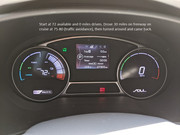
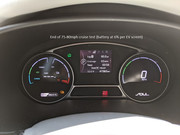
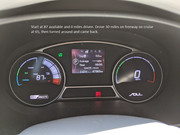
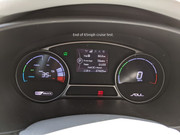
oldpueblo said:The intent of the test was to ignore the GOM and get real world values at two different freeway speeds as well as use ODB2 to check the battery temp difference between them. Spoiler, the battery temps at a constant 75-80 were much higher and I could see that wrecking the battery more.
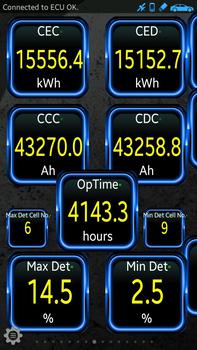
ZuinigeRijder said:...This morning I left with 100% and 155 km range...
...my SOH is around 91% with 133,500 km driven (6 years old) ...
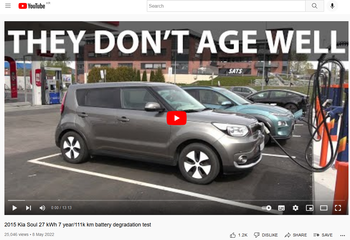
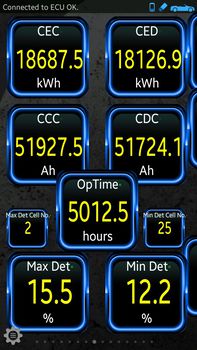
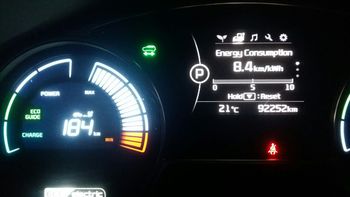

JejuSoul said:For my car the battery deterioration has not been linear. It began fast but after 40,000km has slowed down.

Date km SOH(KDS) Avg Det Max Det Min Det
13-7-2021 145133 91.2 17.3 19.3 15.22017 Kia Soul EV
98.8% battery SOH after 2 years and 8 months
This generation of the Soul EV has a relatively small 27kWh battery with an official range of 132 miles. That figure is achieved under NEDC rules, though, making it even more optimistic than today’s more realistic WLTP figures. Expect a real-world range of about 70-100 miles in real world use depending on the temperature and how you’re driving, but battery life certainly promises to be excellent. Rapid charging is 50kW maximum and via a CHAdeMO socket, though, which is increasingly outdated as the CCS plug type is now the European standard. Not one for long-distance drivers, but otherwise this could be a great used buy.
Top tips for best car battery health : Ways to keep your battery in good health includes running it between 20-80% state of charge in routine use, only using rapid chargers when necessary, not leaving the car plugged in for days when it’s not in use, and not allowing the battery to drop to a very low level of charge.
the average battery retained 93.9% of its performance after three years and 87.9% after six years – this is due to the non-linear nature of battery loss, which dips more quickly in the first few years and then plateaus at a more moderate rate of loss for the bulk of the battery’s mid-life, before dipping again after some 10 to 12 years.